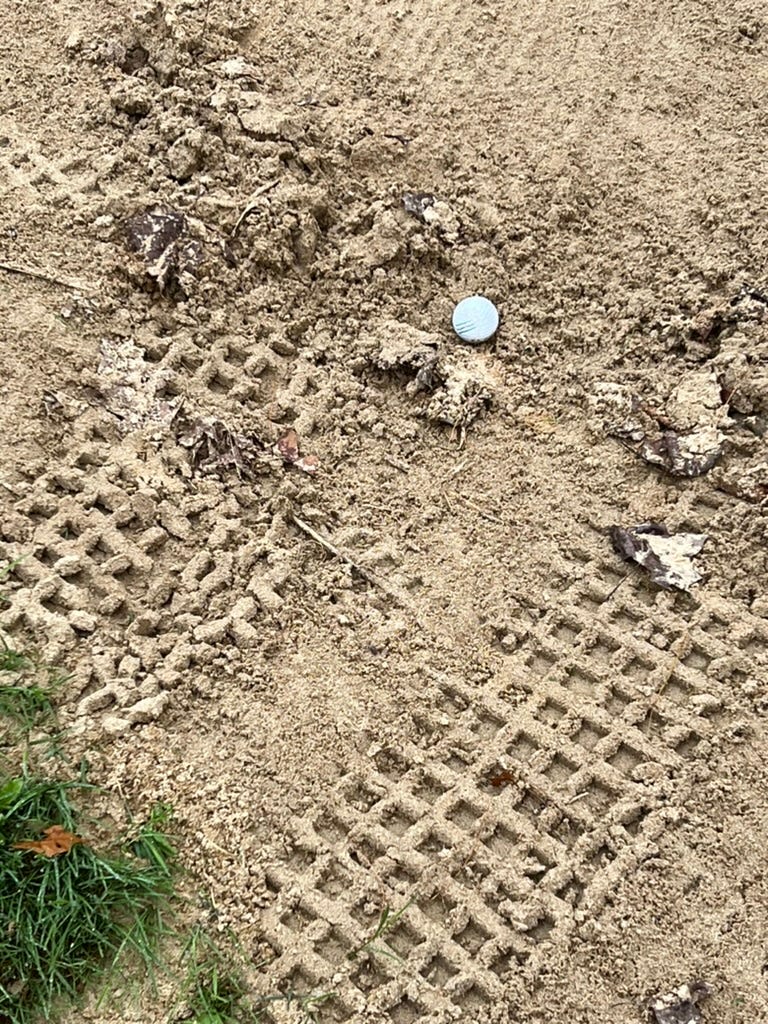As many of you know, I have been strongly dismissive of how the rules of golf are often interpreted and believe that the tendency to treat the rules of golf in the same starchy ways that courts analyze obscure texts means that more and more people simply ignore the rules of golf. Less would be more, I suspect. The real rules munchkins really really need medicine for what is obviously a significant, but very specialized, style of Obsessive-Compulsiveness. In the past two weeks, and not relating to anything I did myself, I weighed in on a case and said: “I think, if we apply the rule of reason to work out how to interpret this . . . .” and, the leader of the Committee said, without any hint of irony, that “we do not use a rule of reason in golf, Dr. Blessing. It is not in the rule book.”
Oh . . . sorry. My fault for using reason on a golf course. Mea culpa.
My latest example is in the picture below:
I caught a fairway bunker and when I walked over to it, I could see, as you can, that some groundskeeper had apparently taken a tractor into the bunker, leaving tractor tread marks. In addition, when whoever had driven a tractor into the bunker turned sharply left to exit the bunker, a goodly amount of debris. leaves, pebbles, and such were thrown into the hole that was apparently made by that sharp left turn—a hole into which my ball landed.
Now this was just a regular round and I took a picture and asked the committee for a ruling on this, not to adjust my score, but simply because I was curious about what such a ruling would be (and suspecting the worst, I must admit).
I was not disappointed.
I had had the misfortune to use the term “abnormal lie” instead of “abnormal course condition.” So I was informed that there is no such thing as an “abnormal lie.” Ok, I can accept that. Wrong term . . . that really is my fault. One member told me in writing to play stronger and another told me to play better (I knew neither member). But then the Committee as a whole wrote the response in such a way as to show that they knew I was attempting to reference Rule 16 on Abnormal Course Conditions—for they then attempted to inform me that had I used the correct term, Rule 16 would be interpreted under a definition that says abnormal course conditions are:
[a]ny of these four defined conditions:
none of which fit (rather obviously).
(By the way, I have a Ph.D. and two Masters . . . what happens if you are just a working guy or gal and you write imperfectly to the committee? Do they come out and break your clubs and strip the fuzzy ball off your tam o’shanter?)
As I remarked to some friends . . . damned glad it wasn’t a land mine.
However, such a narrow interpretation of the USGA’s definition contradicts the general statement of that section:
Keep reading with a 7-day free trial
Subscribe to Golfing on the Edge to keep reading this post and get 7 days of free access to the full post archives.



